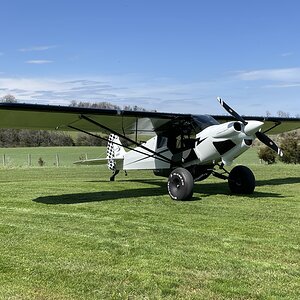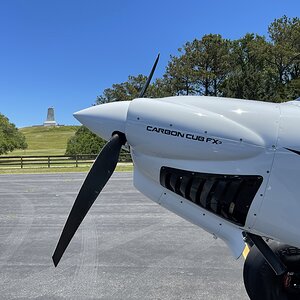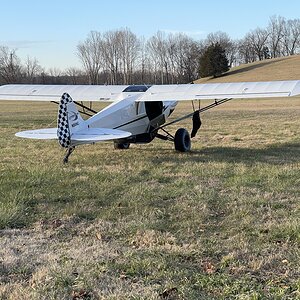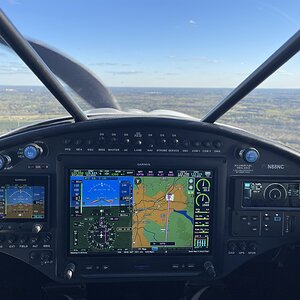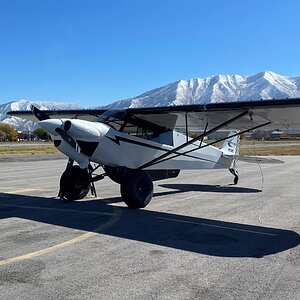islandhopper
Clone War veteran
- Joined
- May 9, 2003
- Posts
- 718
These two monkeys are sure to kill each other. I'm sure glad I bought that case of popcorn for my flight bag this summer.
http://www.mauinews.com/story.aspx?id=18839
Pacific Wings’ feathers ruffled over proposed aircraft mix
By HARRY EAGAR, Staff Writer
HONOLULU – The last time an interisland airline using large planes tried to use a commuter terminal, tiny Pacific Wings successfully objected.
It’s a new year. Another Part 121 (larger plane) airline is trying to move into a commuter terminal. Pacific Wings President Greg ********************************************* is objecting again.
As of Tuesday afternoon, it was not clear who was winning, but ********************************************* was feeling confident after a meeting with state Department of Transportation and Federal Aviation Administration officials.
That was a turnaround just from Tuesday morning, when Airports Division spokesman Scott Ishikawa said the decision had been made in favor of Mesa Airlines’ new go! interisland venture. That, in turn, was a turnaround from the previous week, when go! was informed it would have to use the interisland terminal at Honolulu International Airport.
Both Mesa and Aloha Airlines objected to that. Aloha operates from the interisland terminal on Oahu.
Mesa Chairman Jonathan Ornstein had told Oahu reporters that being in the commuter terminal – a single-story facility next to the four-level interisland terminal – was important to his low-cost strategy, because the departure fees would be lower, $25 rather than $92.
Pacific Wings successfully opposed the attempt by Island Air to use the commuter terminal at Kahului Airport last year.
*********************************************, contends that “big terminals are for big airplanes, little terminals are for little airplanes.”
Ishikawa says circumstances are different in Honolulu, and it was decided that go!’s comparatively big Bombardier Canadair 200/100 RJ regional jets made a poor fit at the interisland terminal, which has jetways for passenger loading.
The go! planes are rather low, he said Tuesday, and the angle they would make to the jetway was awkward.
Airports Division managers decided it would be safer to have the planes arrive and depart at the commuter terminal, with passengers loading the old-fashioned way, by walking across the pavement and climbing aboard on stairs.
Congestion in the lobby and baggage area at the interisland terminal was also a problem to be avoided, Ishikawa said.
Operations are different at Honolulu, the 19th busiest airport in the country, than at Kahului, he said.
********************************************* contends that mixing big and little planes, jets and props, “will have a direct and adverse impact on our business and safety interests.”
Ishikawa confirmed that the division is aware that ********************************************* is “not happy.”
He was so unhappy that he demanded a meeting Tuesday, which was adjourned after an hour and is to reconvene on Thursday.
********************************************* says he learned, however, that there are no contracts signed for go! to use the Honolulu commuter terminal and there is no counter space available there.
On the other hand, he contends there is a counter user at the interisland terminal (JTB travel agency) that could be moved.
He says an FAA representative said that agency would not sign off until there was a final safety plan approved. So far there is none.
********************************************* says the state is jeopardizing its qualifications to continue to get FAA grants. He is challenging the right of the state to continue to collect the $3 per passenger facility fee if it does not attempt to maximize income at the interisland terminal, built partly with federal funds.
“That’s $15 million a year,” he said.
According to *********************************************, the interisland terminal has plenty of room, since it was designed to be home to Aloha and Hawaiian airlines in the days when those carriers had much bigger local operations, plus as many as four other airlines.
Rather than being congested, ********************************************* says, there is a large annex that was used by Aloha and Hawaiian during reconstruction in the late 1990s. It has been empty for the past five years, he says.
Ornstein says he is not aware that FAA has any role in the matter.
********************************************* says he interprets regulations to say that the state cannot discriminate among carriers with different fees.
He thinks the real reason for the brouhaha is that go! and Aloha did not want to be neighbors at the interisland terminal.
Ornstein says go! planned all along to use the Honolulu commuter terminal. Earlier this month, his airline was assigned to the interisland terminal, which set off a dispute on Oahu and surprised *********************************************, who thought the issue had already been settled in March.
State legislators weighed in – where ********************************************* says they had no business to be, since he regards it as a federal matter even though the state owns the airports – and within days go! was assigned to the commuter terminal. However, it does not plan to begin flying until June 9.
********************************************* says the safety arguments being used by go! are bogus. He won a similar argument when Island Air wanted to put its 50-seat DASH-8 prop planes next to Pacific Wings’ 9-seat Cessna Caravans at Kahului.
The Airports Division countered that there was not enough room at Kahului’s main terminal, but ********************************************* stuck to his guns, and Island Air ended up loading with the big boys at the main terminal.
Aloha opened the dispute by objecting to mixing its Boeing 737s with go!’s jets, calling it hazardous.
In a press release issued by PROP (Part 135 Regulated Operators Partnership of Hawaii, a small-plane user group whose biggest member is Pacific Wings), ********************************************* pointed out that “Aloha currently conducts jet operations alongside even smaller 36-seat aircraft with passenger ground-loading requirements at Kona, Hilo, Kahului and Lihue airports.”
He accused Aloha Senior Vice President Lee Steele of telling the world, by implication, that “at least four state airports may not be safe for passengers or employees.”
********************************************* points out that go!’s planes are half the capacity of Aloha’s or Hawaiian’s jets, but five times as big as his Caravans.
If mixing big and little is wrong at the interisland terminal, he said, why is it OK to mix big and very little at the commuter terminal? There also was a question of where go! would fit with its long-term plans for expanding its service.
Ornstein said when go! announced the details of its plans that as his new airline grew, he expected it to re-equip with larger planes, probably 80-seat jets.
Monday, he said, “That’s a couple of years down the road.”
********************************************* says the meeting Tuesday was suspended when time ran out, but intends to renew his objections Thursday.
DOT officials were not available for comment late Tuesday.
Harry Eagar can be reached at [email protected].
http://www.mauinews.com/story.aspx?id=18839
Pacific Wings’ feathers ruffled over proposed aircraft mix
By HARRY EAGAR, Staff Writer
HONOLULU – The last time an interisland airline using large planes tried to use a commuter terminal, tiny Pacific Wings successfully objected.
It’s a new year. Another Part 121 (larger plane) airline is trying to move into a commuter terminal. Pacific Wings President Greg ********************************************* is objecting again.
As of Tuesday afternoon, it was not clear who was winning, but ********************************************* was feeling confident after a meeting with state Department of Transportation and Federal Aviation Administration officials.
That was a turnaround just from Tuesday morning, when Airports Division spokesman Scott Ishikawa said the decision had been made in favor of Mesa Airlines’ new go! interisland venture. That, in turn, was a turnaround from the previous week, when go! was informed it would have to use the interisland terminal at Honolulu International Airport.
Both Mesa and Aloha Airlines objected to that. Aloha operates from the interisland terminal on Oahu.
Mesa Chairman Jonathan Ornstein had told Oahu reporters that being in the commuter terminal – a single-story facility next to the four-level interisland terminal – was important to his low-cost strategy, because the departure fees would be lower, $25 rather than $92.
Pacific Wings successfully opposed the attempt by Island Air to use the commuter terminal at Kahului Airport last year.
*********************************************, contends that “big terminals are for big airplanes, little terminals are for little airplanes.”
Ishikawa says circumstances are different in Honolulu, and it was decided that go!’s comparatively big Bombardier Canadair 200/100 RJ regional jets made a poor fit at the interisland terminal, which has jetways for passenger loading.
The go! planes are rather low, he said Tuesday, and the angle they would make to the jetway was awkward.
Airports Division managers decided it would be safer to have the planes arrive and depart at the commuter terminal, with passengers loading the old-fashioned way, by walking across the pavement and climbing aboard on stairs.
Congestion in the lobby and baggage area at the interisland terminal was also a problem to be avoided, Ishikawa said.
Operations are different at Honolulu, the 19th busiest airport in the country, than at Kahului, he said.
********************************************* contends that mixing big and little planes, jets and props, “will have a direct and adverse impact on our business and safety interests.”
Ishikawa confirmed that the division is aware that ********************************************* is “not happy.”
He was so unhappy that he demanded a meeting Tuesday, which was adjourned after an hour and is to reconvene on Thursday.
********************************************* says he learned, however, that there are no contracts signed for go! to use the Honolulu commuter terminal and there is no counter space available there.
On the other hand, he contends there is a counter user at the interisland terminal (JTB travel agency) that could be moved.
He says an FAA representative said that agency would not sign off until there was a final safety plan approved. So far there is none.
********************************************* says the state is jeopardizing its qualifications to continue to get FAA grants. He is challenging the right of the state to continue to collect the $3 per passenger facility fee if it does not attempt to maximize income at the interisland terminal, built partly with federal funds.
“That’s $15 million a year,” he said.
According to *********************************************, the interisland terminal has plenty of room, since it was designed to be home to Aloha and Hawaiian airlines in the days when those carriers had much bigger local operations, plus as many as four other airlines.
Rather than being congested, ********************************************* says, there is a large annex that was used by Aloha and Hawaiian during reconstruction in the late 1990s. It has been empty for the past five years, he says.
Ornstein says he is not aware that FAA has any role in the matter.
********************************************* says he interprets regulations to say that the state cannot discriminate among carriers with different fees.
He thinks the real reason for the brouhaha is that go! and Aloha did not want to be neighbors at the interisland terminal.
Ornstein says go! planned all along to use the Honolulu commuter terminal. Earlier this month, his airline was assigned to the interisland terminal, which set off a dispute on Oahu and surprised *********************************************, who thought the issue had already been settled in March.
State legislators weighed in – where ********************************************* says they had no business to be, since he regards it as a federal matter even though the state owns the airports – and within days go! was assigned to the commuter terminal. However, it does not plan to begin flying until June 9.
********************************************* says the safety arguments being used by go! are bogus. He won a similar argument when Island Air wanted to put its 50-seat DASH-8 prop planes next to Pacific Wings’ 9-seat Cessna Caravans at Kahului.
The Airports Division countered that there was not enough room at Kahului’s main terminal, but ********************************************* stuck to his guns, and Island Air ended up loading with the big boys at the main terminal.
Aloha opened the dispute by objecting to mixing its Boeing 737s with go!’s jets, calling it hazardous.
In a press release issued by PROP (Part 135 Regulated Operators Partnership of Hawaii, a small-plane user group whose biggest member is Pacific Wings), ********************************************* pointed out that “Aloha currently conducts jet operations alongside even smaller 36-seat aircraft with passenger ground-loading requirements at Kona, Hilo, Kahului and Lihue airports.”
He accused Aloha Senior Vice President Lee Steele of telling the world, by implication, that “at least four state airports may not be safe for passengers or employees.”
********************************************* points out that go!’s planes are half the capacity of Aloha’s or Hawaiian’s jets, but five times as big as his Caravans.
If mixing big and little is wrong at the interisland terminal, he said, why is it OK to mix big and very little at the commuter terminal? There also was a question of where go! would fit with its long-term plans for expanding its service.
Ornstein said when go! announced the details of its plans that as his new airline grew, he expected it to re-equip with larger planes, probably 80-seat jets.
Monday, he said, “That’s a couple of years down the road.”
********************************************* says the meeting Tuesday was suspended when time ran out, but intends to renew his objections Thursday.
DOT officials were not available for comment late Tuesday.
Harry Eagar can be reached at [email protected].

